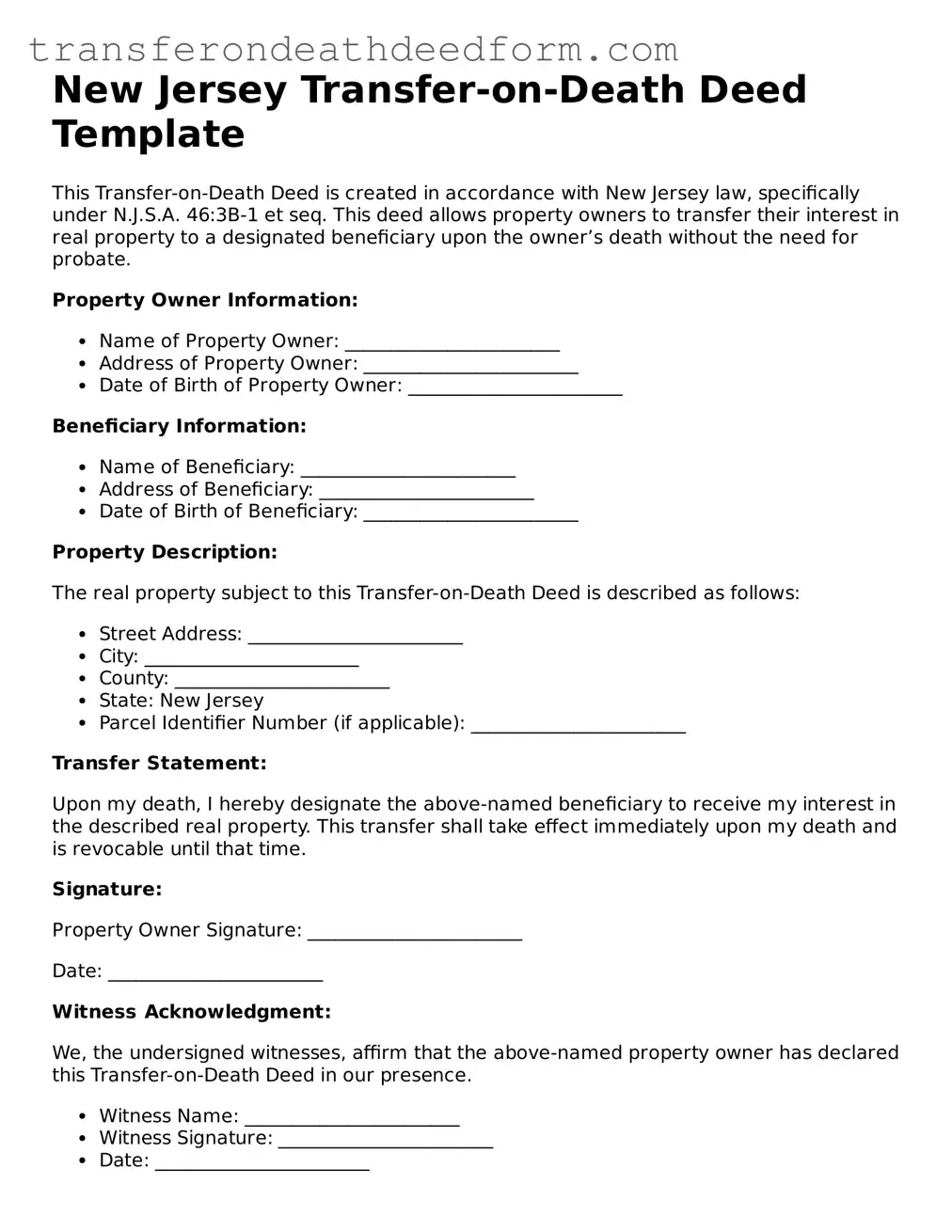New Jersey Transfer-on-Death Deed Template
This Transfer-on-Death Deed is created in accordance with New Jersey law, specifically under N.J.S.A. 46:3B-1 et seq. This deed allows property owners to transfer their interest in real property to a designated beneficiary upon the owner’s death without the need for probate.
Property Owner Information:
- Name of Property Owner: _______________________
- Address of Property Owner: _______________________
- Date of Birth of Property Owner: _______________________
Beneficiary Information:
- Name of Beneficiary: _______________________
- Address of Beneficiary: _______________________
- Date of Birth of Beneficiary: _______________________
Property Description:
The real property subject to this Transfer-on-Death Deed is described as follows:
- Street Address: _______________________
- City: _______________________
- County: _______________________
- State: New Jersey
- Parcel Identifier Number (if applicable): _______________________
Transfer Statement:
Upon my death, I hereby designate the above-named beneficiary to receive my interest in the described real property. This transfer shall take effect immediately upon my death and is revocable until that time.
Signature:
Property Owner Signature: _______________________
Date: _______________________
Witness Acknowledgment:
We, the undersigned witnesses, affirm that the above-named property owner has declared this Transfer-on-Death Deed in our presence.
- Witness Name: _______________________
- Witness Signature: _______________________
- Date: _______________________
- Witness Name: _______________________
- Witness Signature: _______________________
- Date: _______________________
Notary Acknowledgment:
State of New Jersey, County of _______________________
On this _____ day of ______________, 20___, before me, a Notary Public, appeared _______________________ (property owner) and acknowledged the execution of this Transfer-on-Death Deed.
Notary Public Signature: _______________________
My Commission Expires: _______________________
